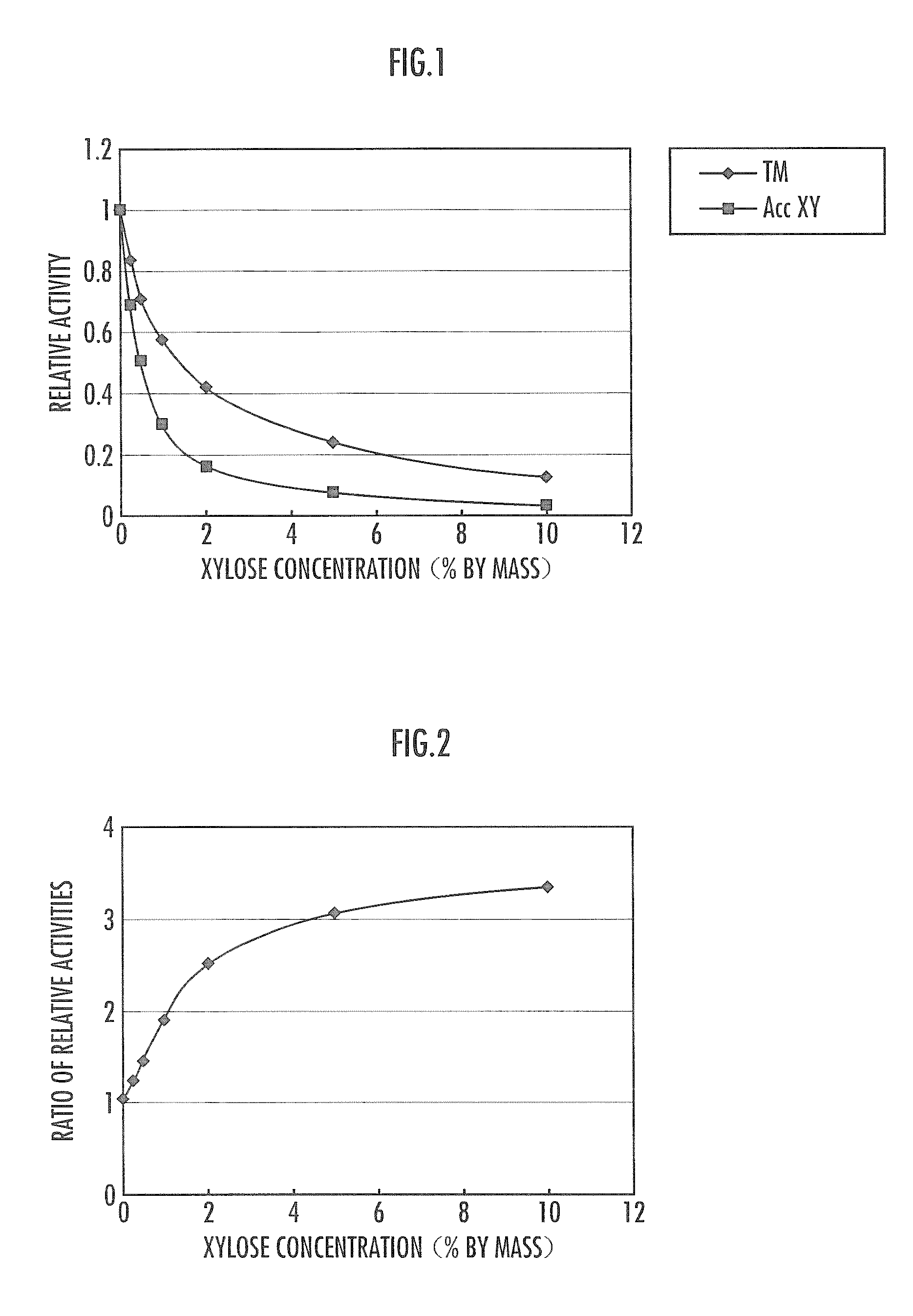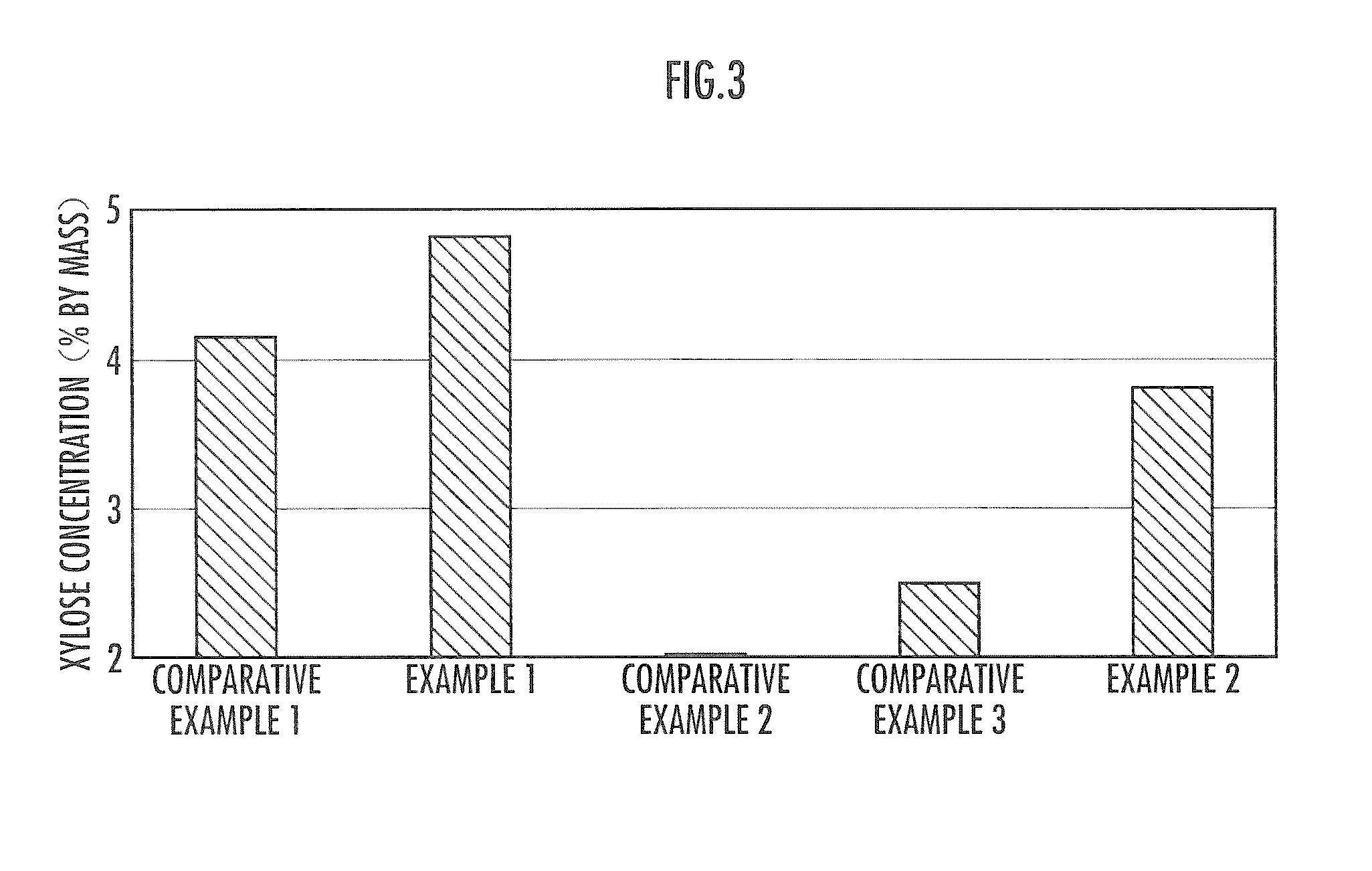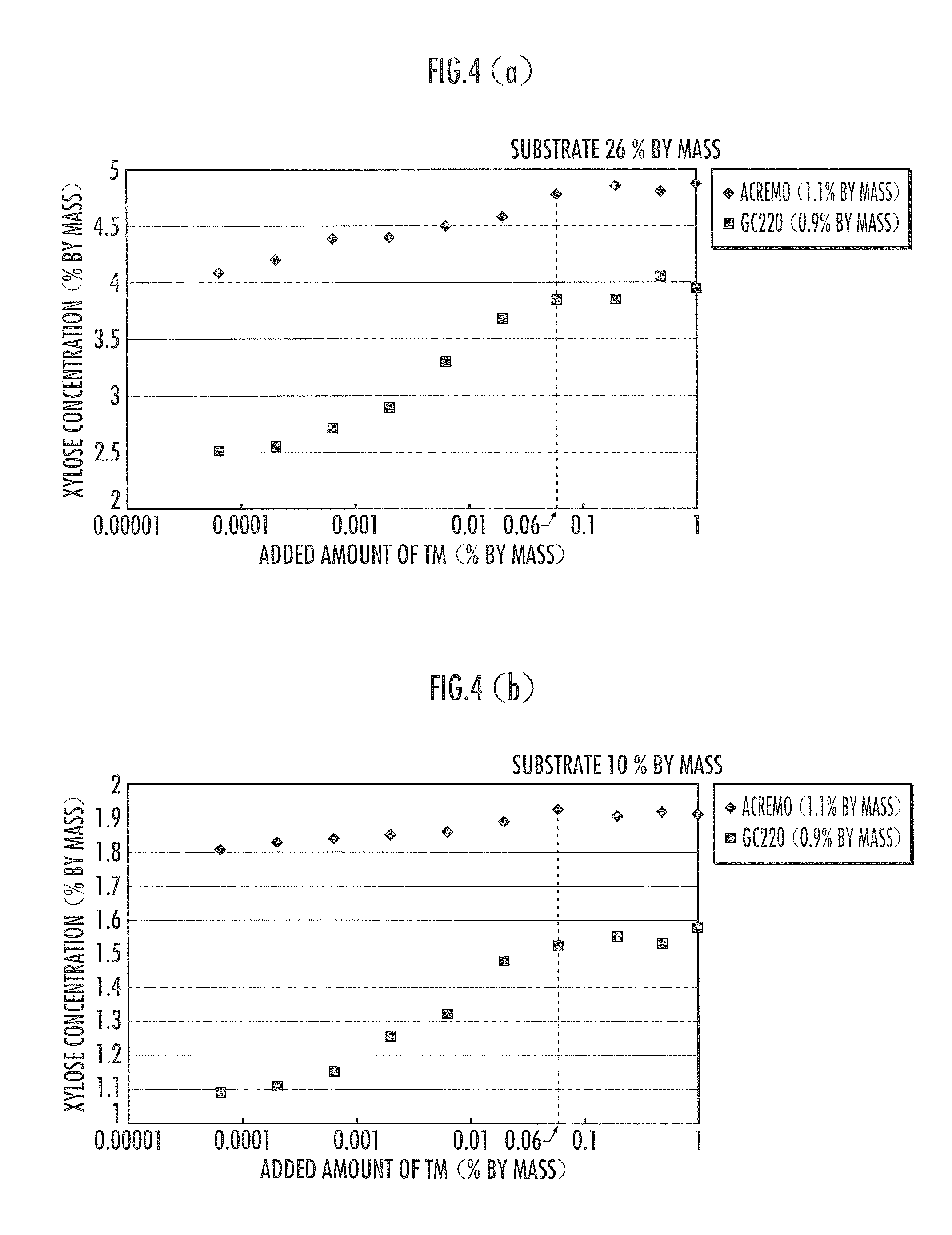Process for producing saccharified solution of lignocellulosic biomass
a technology of lignocellulosic biomass and saccharification solution, which is applied in the direction of biochemistry apparatus and processes, enzymes, fermentation, etc., can solve the problems of increasing the time and thermal energy required for distillation in order to concentrate the obtained ethanol, and the concentration of saccharified solution becomes also low, so as to achieve high yield
- Summary
- Abstract
- Description
- Claims
- Application Information
AI Technical Summary
Benefits of technology
Problems solved by technology
Method used
Image
Examples
example 1
[0052]In the current Example a saccharified solution was produced as follows.
[0053]Firstly, air-dried rice straw was crushed by a cutter mill and passed through a screen filter 3 mm in diameter to prepare crushed rice straw. Then the crushed rice straw was mixed with 25% by mass-ammonia water at a mass ratio of 1:4 to obtain a substrate mixture. The substrate mixture was maintained at a temperature of 80° C. for 8 hours to react the crushed rice straw with the ammonia water to dissociate lignin contained therein or swell the crushed rice straw, and thus a pretreated material for saccharification was prepared. Then the pretreated material for saccharification was air-dried to remove ammonia from the pretreated material for saccharification to prepare ammonia-treated rice straw.
[0054]Next, the ammonia-treated rice straw was suspended in an acetate buffer solution (pH 4). To the prepared suspension a saccharifying enzyme originated from a microorganism of the genus Acremonium (by Meiji...
example 2
[0059]In the current Example, a saccharified solution was obtained identically with the Example 1, except that a saccharifying enzyme originated from a microorganism of the genus Trichoderma (by Genencor, a division of Danisco US Inc. Trade name: GC220) substituted for the saccharifying enzyme originated from a microorganism of the genus Acremonium as the first saccharifying enzyme and was added to an effective protein concentration of 0.9% by mass with respect to the total amount of the suspension. The added saccharifying enzymes are shown in Table 1.
[0060]Then the concentration of xylose in the obtained saccharified solution was analyzed quantitatively identically with Example 1. The result is shown in FIG. 3.
example 3
[0068]In the current Example, a saccharified solution was obtained identically with the Example 1, except that the added amount of the β-xylosidase originated from Thermotoga maritima as the second saccharifying enzyme was changed so that the effective protein concentration thereof should fall within the range of 0.00002 to 10% by mass with respect to the total amount of the suspension.
[0069]Then the concentration of xylose in the obtained saccharified solution was analyzed quantitatively identically with Example 1. The concentration of the produced xylose in relation to the added amount of the β-xylosidase originated from Thermotoga maritima is shown in FIG. 4(a).
[0070]The expression “TM” in FIG. 4 means β-xylosidase originated from Thermotoga maritima, the expression “Acremo” means a saccharifying enzyme originated from a microorganism of the genus Acremonium and the expression “GC220” means a saccharifying enzyme originated from a microorganism of the genus Trichoderma.
PUM
| Property | Measurement | Unit |
|---|---|---|
| temperature | aaaaa | aaaaa |
| temperature | aaaaa | aaaaa |
| temperature | aaaaa | aaaaa |
Abstract
Description
Claims
Application Information
 Login to View More
Login to View More - R&D
- Intellectual Property
- Life Sciences
- Materials
- Tech Scout
- Unparalleled Data Quality
- Higher Quality Content
- 60% Fewer Hallucinations
Browse by: Latest US Patents, China's latest patents, Technical Efficacy Thesaurus, Application Domain, Technology Topic, Popular Technical Reports.
© 2025 PatSnap. All rights reserved.Legal|Privacy policy|Modern Slavery Act Transparency Statement|Sitemap|About US| Contact US: help@patsnap.com



